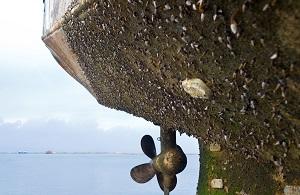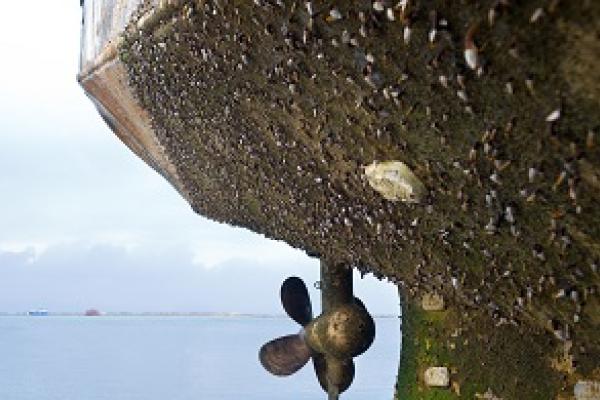
Heloise Campbell
Published: May 23, 2018
Image


Hull fouling is a very common problem affecting vessels trading in tropical water ports and can be a particular issue when there is an extended waiting period to berth. Disputes in relation to underperformance following a port stay and the responsibility for any hull cleaning can be costly and are not straightforward. The issues arising were discussed in the Club’s previous articles in July 2013 and July 2016.
London Arbitration 25/17 considered the extent to which a charterer could be held responsible for underperformance under a follow-on fixture which occurred as a result of hull fouling. The conclusion reached was that a charterer could be responsible for claims arising under a follow-on fixture until such point when owners had a reasonable opportunity to rectify the situation. The outcome will of course depend on the charterparty wording and the particular facts of the situation but this case is a useful reminder of the issues which can be encountered.
Background Facts
The vessel was chartered on an amended NYPE 1946 form for a time charter from Sual in the Philippines to Singapore/Malaysia carrying a cargo of coal. The vessel arrived at her discharge port Lumut, Malaysia on 1 July 2014 and then had to wait for a berth until 31 July 2014. Three weeks into the port stay, the Master raised a concern that there were signs of marine growth and barnacles around the waterline. In response to this, Charterers ordered the vessel to proceed to sea for three hours. However, when the Master queried the effectiveness of this suggestion Charterers failed to confirm their instructions. Discharge was completed on 5 August 2014 which resulted in a total port stay of 35 days.
The vessel was chartered on 25 July for a follow-on fixture to a different charterer with delivery on dropping the outward pilot on sailing from Lumut. Following delivery, the vessel proceeded to Singapore to bunker and then to load a cargo in Indonesia, with a laycan at load port of 2 to 11 August.
Owners investigated the possibility of hull cleaning in Singapore at the same time as bunkering. However when this proposal was suggested to both sets of charterers, neither party responded. In any event, the hull cleaning would have taken a longer period than bunkering and would have resulted in a delay to the vessel.
The vessel arrived at the loadport on 9 August. On completion of the follow-on fixture those charterers submitted a performance claim. This claim was settled for US$41,303.83 and after completion of the fixture the vessel underwent hull cleaning.
Owners commenced arbitration against the first set of Charterers claiming that the hull had become fouled in Malaysia and that Charterers were in breach of clauses 4 and 43 (see below). Owners’ claim was for the costs of the hull cleaning in addition to the settlement paid to the follow-on charterers.
The Charterparty
The relevant clauses in the charter were clauses 4 and 43:
i. Clause 4 related to payment of hire and provided that the vessel would be redelivered: “in like good order and condition, ordinary wear and tear excepted... with water washed dry holds or in Charterers’ option, redelivery unclean against a lumpsum of US$5,000 in like good order and condition, ordinary wear and tear excepted ...”
ii. Clause 43 related to long port stays and provided: “If the vessel, whilst under Charterers orders, is idle or remains stationary at a port or anchorage or at any other place for a period of more than 30 days leading to marine growth at vessel’s hull, the Master to report same immediately to Charterers when same has been discovered. Owners will not be responsible for reduction of speed/over consumption from such fouling. However if requested by Charterers, Owners will endeavour to carry out hull/bottom cleaning at a mutually agreed convenient port/place where proper facilities are available, at Charterers time risk and expense. In any case Charterers to redeliver the vessel in the same condition (including vessels hull/bottom) as she was on delivery.”
Arbitration Decision
In response to Owners’ claim, Charterers put forward a number of arguments:
1. The vessel’s hull was probably fouled at the time of delivery into the subject charter.
The Tribunal held that on balance of probabilities there was no significant hull fouling when the vessel was delivered into the subject charter and that the fouling occurred whilst awaiting discharge in Lumut.
The first sign of hull fouling was noted on 22 July and the hull condition continued to deteriorate between then and 4 August when she was redelivered. There was no doubt that the hull was seriously fouled when redelivered from the follow-on fixture. It was also noted that Charterers had not complained of an underperformance/overconsumption in the laden voyage of the subject charter, this suggested that there may not have been any fouling at this point.
Furthermore, Lumut is almost equatorial and a prolonged stay in these waters would have made the vessel highly susceptible to hull fouling
2. The Master should have complied with Charterers’ instructions on 29 July 2014 to proceed to sea for a short period.
So far as the orders to proceed to sea on 29 July were concerned, the Tribunal held that the Master was right to query these orders in light of his view that this would not solve the issue. Charterers accepted they did not respond to his request for confirmation of the orders and in light of this the Tribunal considered that the Master could not be blamed for not following the original orders. In any event, the expert evidence considered in the arbitration indicated that a short sea passage of 3 hours would not have removed or prevented the fouling.
3. Any fouling constituted “ordinary wear and tear” so that Charterers were not in breach of charter.
As to whether Charterers were in breach, the key wording was the final sentence of clause 43, “In any case Charterers to redeliver the vessel in, the same condition (including vessels hull/bottom) as she was on delivery”, which made it clear that redelivery of the vessel with a hulled foul would not fall within the fair wear and tear exception. Therefore, redelivery with a fouled hull was a breach of charter.
4. Owners should have cleaned the hull prior to the follow-on fixture.
As noted above, Owners did consider cleaning the hull whilst bunkering prior to proceeding to the loadport for the follow-on fixture. However, neither charterer responded to this proposal. It was also noted that the vessel would not have had sufficient time for cleaning at this time.
5. The performance claim presented by the follow-on charterers was not related to events at Malaysia and might have been due to engine problems.
The Tribunal rejected this argument on the basis that there was no evidence of engine problems having been experienced. The Tribunal also came to the conclusion that the underperformance claim for the follow-on fixture was indefensible and Owners were justified in the settlement of this.
In these circumstances, the Tribunal reached a conclusion that Charterers were in clear breach of clause 43 by redelivering the vessel with a fouled hull and the damages which flowed from this were the costs of cleaning and the loss of performance until Owners had a reasonable opportunity to rectify the situation. In light of this, Owners were entitled to claim the costs of the underperformance under the follow-on fixture from Charterers.
Comment
The decision reached by the Tribunal is pragmatic, and would seem to be sensible in light of the facts and the express wording of clause 43. It also emphasises that the liabilities which may flow from a long port stay do not necessarily cease on redelivery of the vessel. It serves as a reminder that it is of key importance to carefully consider the wording of any charterparty clause which addresses hull fouling and to ensure that the set process is followed. In the event that there has been a long port stay which may have given rise to hull fouling, both owners and charterers may wish to engage surveyors to assess any consequent fouling albeit this will depend on the obligations contained in the fixture. In the event that there has been hull fouling, charterers may be liable for owners’ damages which may be considerable and may include losses incurred under a follow-on fixture.


